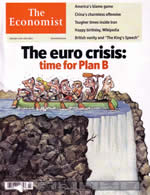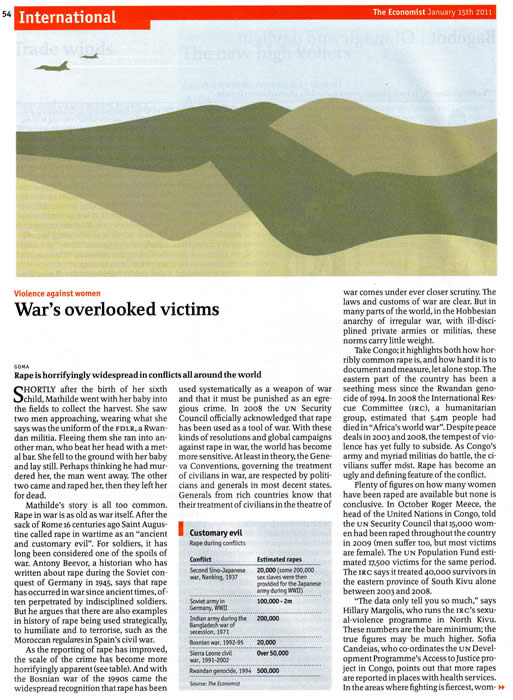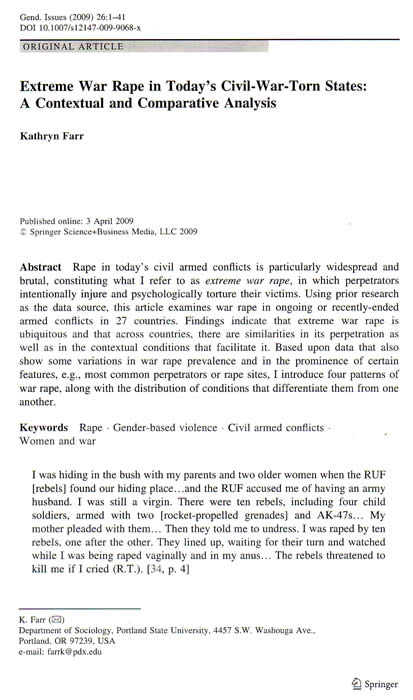Ilankai Tamil Sangam30th Year on the Web Association of Tamils of Sri Lanka in the USA |
||||
 Home Home Archives Archives |
Prabhakaran and the LTTEA Select Chronological Bibliography, Part 3by Sachi Sri Kantha, November 27, 2011
Like the previous two years (2009 and 2010), I have collected the research-oriented publications on Velupillai Prabhakaran and LTTE, which had appeared in peer-reviewed international journals recently. In 2009 (part 1), there were 70 items. In 2010 (part 2), there were 56 items. This year, I have collected 63 items. These numbers partially indicate that research on LTTE provides ‘bread and butter’ to many academics, all over the world. Rather than arranging these in the conventional alphabetical order according to the author, I have opted to arrange these in chronological order. LTTE’s Merits over the Sri Lankan Army
As all know, though LTTE was militarily defeated by the Sri Lankan army in May 2009, there are two specific issues on which Sri Lankan army could not top the LTTE’s record. First, by general consensus, LTTE outwitted and outperformed the Indian army, in its 1987-90 confrontation. As of now, Sri Lankan army cannot boast of this record. Secondly, when it comes to the issue of rape in war and violence against women, LTTE’s record is unblemished. But the record of Sri Lankan army is despicable! In its January 15th 2011 issue, the Economist magazine published a three page unsigned commentary ‘War’s overlooked victims’ (pp.54-56). The Economist, as I have chronicled in the past, has been a biased observer on LTTE’s record. Thus, in this unsigned commentary, Economist paid a left-handed compliment to LTTE as follows:
When reading the texts of these research-oriented papers, it become evident that majority of these are merely labored bone shifting efforts of language challenged, culture challenged, dimwit academics from one boneyard (grave) to another boneyard. The sources of their original data on the Tamil Tigers are biased as well, such as ‘terrorism expert’ Rohan Gunaratna. The cited so-called ‘LTTE experts’ (D.B.S.Jeyaraj, Rajan Hoole and their ilk), with the exception of Daya Somasundaram have never published in any peer-reviewed journals which cater to the relevant areas of interest. The Dialectical Anthropology journal’s Editorial Among these 63 publications, there are a couple of notable contributions which I would like to review in depth subsequently. These are that of Kathryn Farr (2009) on ‘Extreme war rape in today’s civil-war-torn states’ as well as that of Rene Bakker, Jorg Raab and H.Brinton Milward (2011) on ‘A preliminary theory of dark network resilience’. Also of merit, is one 2009 pensive editorial [Chaos in South Asia] penned by Anthony Marcus, Ananthakrishnan Aiyer and Kirk Dombrowski for the journal Dialectical Anthropology. For its relevance, I provide below four paragraphs from this editorial.
Chronological Bibliography on Prabhakaran and LTTE: Part 3 Publications prior to 2009, which have been not listed in parts 1 and 2, are also included. Altogether, there are 63 items here. D. J. Somasundaram, S. Sivayokan: War trauma in a civilian population. British Journal of Psychiatry, 1994; 165: 524-527. Kristian Stokke: Sinhalese and Tamil nationalism as post-colonial political projects from ‘above’, 1948-1983. Political Geography, 1998; 17(1): 83-113. Mark Phythian: The illicit arms trade – Cold War and post-Cold War. Crime, Law & Social Change, 2000; 33: 1-52. Basil van Horen: Planning for institutional capacity building in war-torn areas: the case of Jaffna, Sri Lanka. Habitat International, 2002; 26: 113-128. Basil van Horen: City profile – Colombo. Cities, 2002; 19(3): 217-227. Oren Yiftachel, As’ad Ghanem: Understanding ‘ethnocratic’ regimes: the politics of seizing contested territories. Political Geography, 2004; 23: 647-676. Margo Kleinfeld: Destabilizing the identity-territory nexus: rights-based discourse in Sri Lanka’s new political geography. GeoJournal, 2005; 64(4): 287-295. Kristine Hoglund, Isak Svensson: ‘Sticking one’s neck out’; Reducing mistrust in Sri Lanka’s peace negotiations. Negotiation Journal, Oct. 2006; pp. 367-387. Sukanya Podder: Challenges to peace negotiations: the Sri Lankan experience. Strategic Analysis (New Delhi), Jul-Sept.2006; 30(3): 576-598. John Sislin, Frederic Pearson: Arms and escalation in ethnic conflicts: The case of Sri Lanka. International Studies Perspectives, 2006; 7: 137-158. Seiji Yamada, Ravindu P.Gunatilake, Timur M.Roytman, Sarath Gunatilake, Thusara Fernando, Lalan Fernando: The Sri Lanka Tsunami experience. Disaster Management and Response, Apr-Jun.2006; 4(2): 38-48. Margaret Harris Cheng: Health and housing after the Indian Ocean Tsunami. Lancet, June 23, 2007; 369: 2066-2068. Pierre-Emmanuel Ly: The charitable activities of terrorist organizations. Public Choice, 2007; 131: 177-195. W.Hutchinson: The systemic roots of suicide bombing. Systems Research and Behavioral Science, 2007; 24: 191-200. Steven Hutchinson, Pat O’Malley: A crime-terror nexus? Thinking on some of the links between terrorism and criminality. Studies in Conflict & Terrorism, Dec. 2007; 30(12): 1095-1107. William Mishler, Steven Finkel, Pradeep Peiris: The 2005 Presidential and 2004 parliamentary elections in Sri Lanka. Electoral Studies, Mar. 2007; 26(1): 205-209. Marie Nagai, Abraham Sandirasegaram, Miyoko Okamoto, Etsuko Kita, Atsuko Aoyama: Reconstruction of health service systems in the post-conflict Northern province in Sri Lanka. Health Policy, Sep. 2007; 83(1): 84-93. Michael Roberts: Suicide missions as witnessing: Expansions, contrasts. Studies in Conflict & Terrorism, 2007; 30: 857-887. Gamini Samaranayake: Political terrorism of the Liberation Tigers of Tamil Eelam (LTTE) in Sri Lanka. South Asia: Journal of South Asian Studies, Apr. 2007; 30(1): 171-183. Alisa Stack-O’Connor: Lions, tigers and freedom birds: How and why the Liberation Tigers of Tamil Eelam employs women. Terrorism and Political Violence, spring 2007; 19(1): 43-63. Eli Berman, David D. Laitin: Religion, terrorism and public goods: testing the club model. Journal of Public Economics, 2008; 92: 1942-1967. Cathrine Brun: Birds of Freedom – Young people, the LTTE, and representations of gender, nationalism, and governance in northern Sri Lanka. Critical Asian Studies, 2008; 40(3): 399-422. Shawn Teresa Flanigan: Nonprofit service provision by: The cases of Hizbullah and the Tamil Tigers. Studies in Conflict & Terrorism, 2008; 31(6): 499-519. Sepali Kottegoda, Kumudini Samuel, Sarala Emmanuel: Reproductive health concerns in six conflict-affected areas of Sri Lanka. Reproductive Health Matters, 2008; 16(31): 75-82. Deirdre McConnell: The Tamil people’s right to self determination. Cambridge Review of International Affairs, 2008; 21(1): 59-76. Shiamala Suntharalingam: Health as a weapon of war? British Medical Journal, June 13, 2008; 338: 1448. Yik Koon The: The abuses and offences committed during the Tsunami crisis. Asian Criminology, 2008; 3: 201-211. Anna Ramirez: A la carte Torture: Maybe a car bomb. Anthropology Today, June 2008; 24(3): 20-21. Michael Roberts: Tamil Tigers – sacrificial symbolism and ‘dead body politics’. Anthropology Today, June 2008; 24(3): 22-23. Howard Adelman: Research on the ethics of war in the context of violence in Gaza. Journal of Academic Ethics, 2009; 7: 93-113. Anonymous editorial: Medical emergency in Sri Lanka. Lancet, Apr.25, 2009; 373: 1399. Anonymous: Sri Lanka’s twin humanitarian crises. Lancet, May 16, 2009; 373: 1667-1668. Thomas Elbert, Maggie Schauer, Elisabeth Schauer, Bianca Huschka, Michael Hirth, Frank Neuner: Trauma-related impairment in children – a survey in Sri Lankan provinces affected by armed conflict. Child Abuse & Neglect, 2009; 33: 238-246. Kyle Beardsley, Brian McQuinn: Rebel groups as predatory organizations – The political effects of the 2004 Tsunami in Indonesia and Sri Lanka. Journal of Conflict Resolution, Aug. 2009; 53(4); 624-645. Ben Bland: Hospital is caught in crossfire in Sri Lanka’s northern war zone. British Medical Journal, Feb.7, 2009; 338: 319. Neloufer de Mel: Gendering the new security paradigm in Sri Lanka. IDS Bulletin – Institute of Development Studies, Mar. 2009; 40(2): 36-43. Kathryn Farr: Extreme war rape in today’s civil war-torn states: a contextual and comparative analysis. Gender Issues, 2009; 26(1): 1-41. Eva Gerharz: Between War and Peace – The Tamil Tigers and their diaspora. Sociologus, 2009; 59(1): 33-49. Jennifer Hyndman: Acts of Aid; Neoliberalism in a war zone. Antipode, 2009; 41(5): 867-889. Nihal Jayasinghe: A misrepresentation of reality. British Medical Journal, July 25, 2009; 339: 188. Bobby Sundaralingam: Confirmation of my experience. British Medical Journal, July 25, 2009; 339: 188. Oliver Johnson, Anenta Ratneswaren, Fenella Beynon: Humanitarian crisis in Vanni, Sri Lanka. Lancet, Mar.7, 2009; 373: 809-810. M.Mayilvaganan: Is it endgame for LTTE? Strategic Analysis (New Delhi), Jan.2009; 33(1): 25-39. Anthony Marcus, Ananthakrishnan Aiyer, Kirk Dombrowski: Editorial – Chaos in South Asia. Dialectical Anthropology, 2009; 33(3-4): 219-224. Jannie Lilja: Trapping constituents or winning hearts and minds? Rebel strategies to attain constituent support in Sri Lanka. Terrorism and Political Violence, 2009; 21(2): 306-326. Hector N. Qirko: Altruism in suicide terror organizations. Zygon, June 2009; 44(2): 289-322. Tudor Kalinga Silva: ‘Tsunami third wave’ and the politics of disaster management in Sri Lanka. Norwegian Journal of Geography, 2009; 63(1): 61-72. Nira Wickramasinghe: Sri Lanka in 2008: Waging war for peace. Asian Survey, Jan-Feb. 2009; 49(1): 59-65. Asoka Bandarage: Women, armed conflict and peace making in Sri Lanka – Toward a political economy perspective. Asian Politics & Policy, 2010; 2(4): 653-667. Daniel Byman, Sarah E.Kreps: Agents of destruction? Applying principal-agent analysis to state sponsored terrorism. International Studies Perspectives, 2010; 11: 1-18. Christopher J. Coyne, Gregory M. Dempster, Justin P.Isaacs: Asset values and the sustainability of peace prospects. Quarterly Review of Economics and Finance, 2010; 50: 146-156. David Hayes: Duty and service; Life and career of a Tamil teacher of English in Sri Lanka. TESOL Quarterly, March 2010; 44(1): 58-83. Maria Steinbauer: Sri Lanka –a year after war; psychological/psychiatric treatment in Sri Lanka. Psychiatrie & Psychotherapie, 2010; 6(4): 230-235 (text in German, with an English summary). James D.Fearon, David D.Laitin: Sons of the soil, migrants and civil war. World Development, 2011; 39(2): 199-211. Jannie Lilja: Ripening within? Strategiees used by rebel negotiators to end ethnic war. Negotiation Journal, July 2011; pp.311-342. Eugene Guribye: ‘No God and no Norway’: collective resource loss among members of Tamil NGO7s in Norway during and after the last phase of the civil war in Sri Lanka. International Journal of Mental Health Systems, 2011: 5: 18 (12 pages). Kristine Hoglund, Isak Svensson: Should I stay or should I go? Termination as a tactic and Norwegian mediation in Sri Lanka. Negotiation and Conflict Management Research, 2011; 4(1): 12-32. Kristine Hoglund, Isak Svensson: Schizophrenic soothers: the international community and contrast strategies for peace making in Sri Lanka. Cooperation and Conflict, June 2011; 46(2): 166-184. Rene M.Bakker, Jorg Raab, H.Brinton Milward: A preliminary theory of dark network resilience. Journal of Policy Analysis and Management. 2011, 30pp. (DOI:10.1002/pam.20619) Dennis B. McGilvray: Sri Lankan Muslims; between ethno-nationalism and the global ummah. Nations and Nationalism, Jan. 2011; 17(1): 45-64. Neavis Morais, Mokbul Morshed Ahmad: NGO-led microfinance; potentials and challenges in conflict areas. Journal of International Development, 2011; 23: 629-640. A.R.M. Imtiyaz, S.R.H. Hoole: Some critical notes on the non-Tamil identity of the Muslims of Sri Lanka and on Tamil-Muslim relations. South Asia: Journal of South Asian Studies, n.s. Aug. 2011; 34(2): 208-231. Matthew Lange: Social welfare and ethnic warfare; exploring the impact of education on ethnic violence. Studies in Comparative International Development, 4 Nov.2011 (online version DOI 10.1007/s12116-011-9095-y). ***** |
|||
|
||||

 The Ms. Wood cited above is Elisabeth Jean Wood, a professor of political science at Yale University. I checked her curriculum vitae sponsored by the Yale University. In it, she states that she has competence in Spanish (fluent speaking and reading proficiency) and Portuguese (fair reading proficiency). But, is she proficient in either Tamil or Sinhalese? Not so, I believe. Here is a typical case of snob bias (an American lady academic and attached to Yale University) perpetrated by the Economist magazine. How dare Ms. Wood pass a judgement on Sri Lankan civil war and on LTTE’s behavior, though in this instance her explanation is favorable to LTTE?
The Ms. Wood cited above is Elisabeth Jean Wood, a professor of political science at Yale University. I checked her curriculum vitae sponsored by the Yale University. In it, she states that she has competence in Spanish (fluent speaking and reading proficiency) and Portuguese (fair reading proficiency). But, is she proficient in either Tamil or Sinhalese? Not so, I believe. Here is a typical case of snob bias (an American lady academic and attached to Yale University) perpetrated by the Economist magazine. How dare Ms. Wood pass a judgement on Sri Lankan civil war and on LTTE’s behavior, though in this instance her explanation is favorable to LTTE? I warn prospective academics, students and fellow Sri Lankan researchers who consult this bibliography that they need to exercise caution to ten identifiable biases, which I have listed in
I warn prospective academics, students and fellow Sri Lankan researchers who consult this bibliography that they need to exercise caution to ten identifiable biases, which I have listed in 